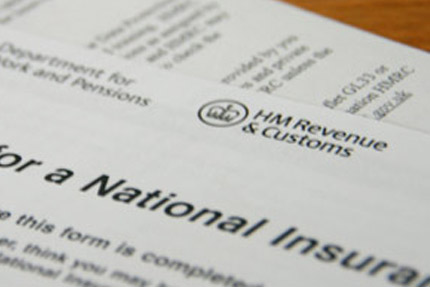Part of David Cameron’s ‘Big Society’ plan is to appoint 5,000 community organisers, a ‘neighbourhood army’ to ‘give communities the help they need’. He says that his intention is to shift power away from central government and towards local communities and individuals. This echoes the efforts of previous Conservative-dominated governments to empower community leaders between the wars. It was then that the administration of national insurance was placed in the hands of mutual aid bodies through a hybrid system which allowed them, and also commercial bodies, to administer health insurance. The result was that mutuality was dealt a severe blow, that commercial organisations grew in power and that the replacement was a centralised system run from Whitehall.
On 16th December 1911 Lloyd George’s Liberal government passed legislation which enabled voluntary and commercial bodies to be ‘approved’ to administer a new state insurance scheme. Poorer-paid workers, their employers and the government had to make payments, via a system of stamps fixed to contribution cards, into an approved society. In turn, in the event of being unable to work, payments were made to those workers who had contributed. The system owed much to the model developed by friendly societies. These were mutual aid organisations which presented themselves as a solution to the problems people and their families knew they would face should they fall ill or die. Each month members contributed a small sum, provided payouts to those who needed them and saved or invested the rest. Many societies had social and educational functions as well. The convivial meetings, parades and regalia were very popular.
Under the 1911 legislation, branches of the societies ‘approved’ by the government had to keep track of nine different account books, 21 different categories of insured persons and 22 different pieces of information about each member. Through their involvement in these processes, approved societies became associated with seven different government departments, three different and mutually exclusive benefits for unemployment and three different types of pension. The part-time, poorly-trained voluntary local secretaries were often overwhelmed by the red tape. At national level the societies also struggled. Their growth was uneven and unplanned as they took over the functions of those societies which had not been ‘approved’ and opened new branches for all those who became members only because of the law. Large sums were held in Whitehall as contingency funds and regulations were frequently tightened, reducing the autonomy of the approved societies. There were tensions with doctors. When it was argued that malingering had increased the approved societies claimed that there was a laxity of certification among medics and the doctors blamed the societies. Prior to the legislation mutual aid organisations when running their own health schemes, collecting contributions, policing fraud and processing claims, had also offered members social activities, parades, elected leaders and annual delegate conferences. Under the legislation they were reduced to administering a labyrinthine actuarial machine.
Commercial insurance companies were also permitted to run the scheme. These did not have a network of quasi-autonomous branches or any traditions of members voting or having to remember passwords or excluding women. They did not rely on men meeting in pubs or halls to share money. Through weekly visits to working-class homes their representatives offered a personal service to clients, combining public administration with private business. By the late 1930s, the industrial companies had overhauled the friendly societies and administered a higher percentage of the market and the commercial Prudential Approved Societies had access to a third of the homes in the country.
Although not in government between the wars, the Labour Party gained experience of running municipal health schemes. It favoured the state centralisation of the administration of insurance and health schemes. When a Labour government was elected in 1945, the 1911 system was widely seen as expensive, administratively complicated, unpopular with doctors and patients, associated with the Conservatives and Liberals and destruction of the local, conviviality democracy and ritual associated with the most popular associations of working people, friendly societies. A centralised system of National Insurance was implemented and the membership of the marginalised friendly societies fell off a cliff. Designing a decent way to help people to save and ensure that the bills for ill people are paid are difficult matters to arrange. There may be a role for mutual, local voluntary bodies. However, a lesson from the 1911 Act is that great care needs to be taken to ensure that good-will and co-operation are not crushed under the weight of a centralised machine.
Acknowledgements
This story was originally published here on the OpenLearn website and is reproduced here with the author’s permission.
